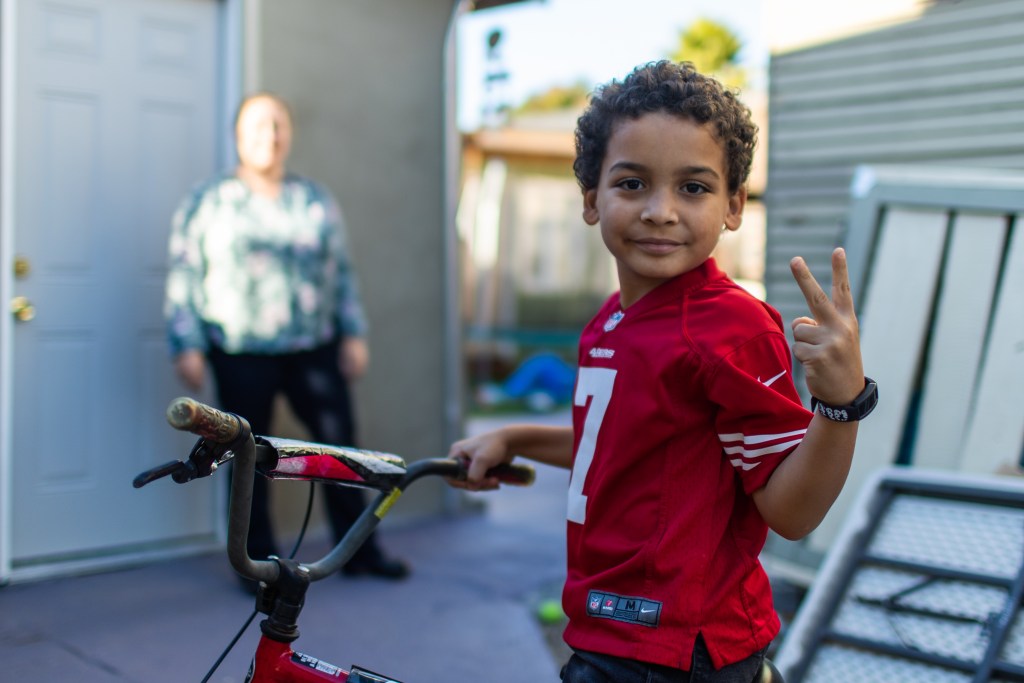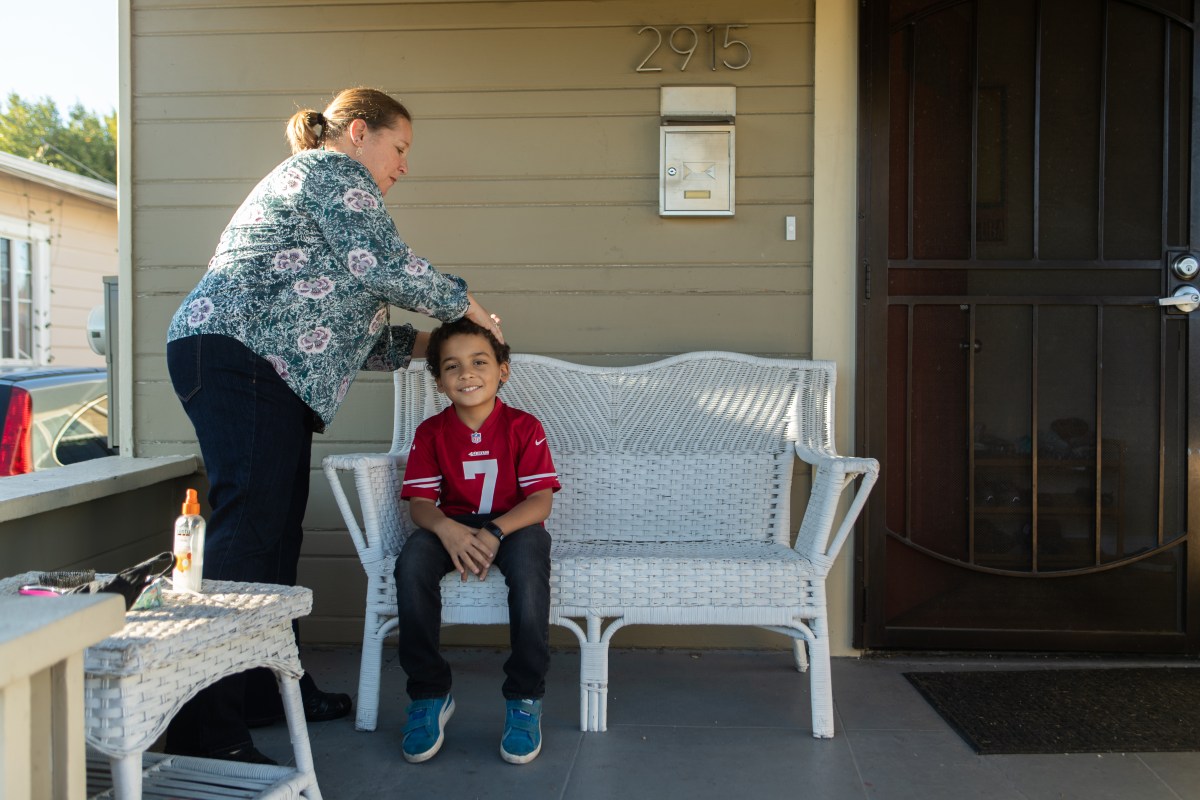With the first full semester of distance learning winding down, Oakland Unified School District leaders and families had been looking to January for the possible reopening of schools. But after Alameda County returned to the most restrictive “purple” tier in the state’s COVID-19 tracking system, those plans could be on hold.
The shift back to purple, or Tier 1, indicates that Alameda County is experiencing increased rates of coronavirus. Oakland has had higher case rates than the county as a whole, with East Oakland zip codes maintaining the highest rates in the city.
“It’s unclear how significantly it could change things, but it’s not good news for any district that’s hoping to reopen schools,” said OUSD spokesman John Sasaki. “It depends on how long we remain in the purple tier and, more importantly, how soon we as a community and a city can get through any surge in COVID.” Sasaki added that the district had been considering reopening schools in late January at the earliest.
School districts in California are allowed to reopen school buildings once their counties have been in the “red” tier—one step down from purple—for 2 weeks. OUSD and the Oakland Education Association teachers’ union would also have to negotiate any reopening plans before that happens.
“In-person instruction is the best way; there’s so many things we can’t do when we’re not in person,” said Chaz Garcia, a member of the bargaining team for the teachers’ union. “Ultimately, nobody can do anything if they’re not alive. It really comes down to making sure that the safety criteria is met so that everyone is in the safest possible position.”
Before the start of this school year, the union and the district agreed on a contract spelling out how distance learning would work through December. Though the contract doesn’t include standards for reopening, OEA has advocated for Oakland to have very few cases and decreasing COVID-19 before resuming in-person instruction. Those standards are more specific than the state’s reopening guidelines, which are based on county-wide numbers.
Some parents in Oakland, where public schools have been closed since March, have formed a group calling for more transparency around the reopening process and negotiations between the teachers’ union and the school district. Rebecca Bodenheimer, a mom in the group whose son attends Melrose Leadership Academy, thinks that the decision to keep schools closed while other businesses reopen is misguided.
“It feels like our priorities are so backwards. Indoor dining, gyms … these are not essential things that we need open. We need schools open so parents can work,” Bodenheimer said.
She pointed to the disproportionate impact that school closures have had on mothers’ careers, causing them to cut back on their workloads or leave the workforce altogether to help their kids through distance learning. For her own son’s needs, Bodenheimer joined a private pandemic learning pod to get through the semester. Four days a week, her third grader goes to another parent’s home from 9 a.m. to 1:30 p.m., she said. Since Bodenheimer works from home as a freelance writer and her husband works outside the home, they needed help monitoring his lessons.
“Some kids’ parents can’t be their teachers. That’s the case with us,” she said.

The parent group, which circulated a petition that has gained nearly 400 supporters, is asking to see the specific standards that the district is using to plan for reopening. They also want members of the public to be able to watch negotiations between the district and the teachers’ union.
While distance learning has been tough on many parents, some say the risk of sending their children back to school seems worse. Clarissa Doutherd, who leads another parent advocacy group called Parent Voices Oakland, has been equally worried about how isolated her son is at home and how difficult it’s been for him to learn virtually.
“He’s an only child and he’s with his very annoying parents all the time,” Doutherd said about her 13-year-old. “This has a significant impact on how he’s able to connect with his peers, and how he’s able to learn and navigate social relationships.”
Nonetheless, Doutherd wouldn’t feel comfortable sending her son back to in-person school because of his asthma condition, which he’s been hospitalized for in the past. First, she’d need to see vast improvements in the district’s facilities and safety protocols, and personal protective equipment for teachers, she said.
“Our district would really need to step up safety measures in order for me to feel comfortable.”
The district created a dashboard earlier this month to track how close school facilities are to being able to safely offer in-person instruction. As of Nov. 11, several measures are at 100% completion: a two-month supply of personal protective equipment, hand sanitizer dispensers at school entrances, a contract tracing system, and daily health screens for staff. Other measures, like custodial staff, ventilation capabilities, and socially distanced classrooms, are further from being ready.
OUSD’s spring semester begins Jan. 4.

